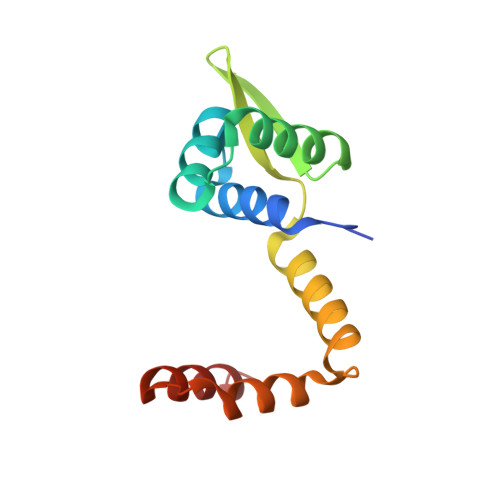Three-Dimensional Structure of Meci: Molecular Basis for Transcriptional Regulation of Staphylococcal Methicillin Resistance
Garcia-Castellanos, R., Marrero, A., Mallorqui-Fernandez, G., Potempa, J., Coll, M., Gomis-Ruth, F.X.(2003) J Biological Chem 278: 39897
- PubMed: 12881514
- DOI: https://doi.org/10.1074/jbc.M307199200
- Primary Citation of Related Structures:
1OKR - PubMed Abstract:
Methicillin-resistant Staphylococcus aureus is the main cause of nosocomial and community-onset infections that affect millions of people worldwide. Some methicillin-resistant Staphylococcus aureus infections have become essentially untreatable by beta-lactams because of acquired molecular machineries enabling antibiotic resistance. Evasion from methicillin challenge is mainly achieved by the synthesis of a penicillin-binding protein of low affinity for antibiotics, MecA, that replaces regular penicillin-binding proteins in cell wall turnover when these have been inactivated by antibiotics. MecA synthesis is regulated by a signal transduction system consisting of the sensor/transducer MecR1 and the 14-kDa transcriptional repressor MecI (also known as methicillin repressor) that constitutively blocks mecA transcription. The three-dimensional structure of MecI reveals a dimer of two independent winged helix domains, each of which binds a palindromic DNA-operator half site, and two intimately intertwining dimerization domains of novel spiral staircase architecture, held together by a hydrophobic core. Limited proteolytic cleavage by cognate MecR1 within the dimerization domains results in loss of dimer interaction surface, dissociation, and repressor release, which triggers MecA synthesis. Structural information on components of the MecA regulatory pathway, in particular on methicillin repressor, the ultimate transcriptional trigger of mecA-encoded methicillin resistance, is expected to lead to the development of new antimicrobial drugs.
- Institut de Biologia Molecular de Barcelona, Centre d'Investigació i Desenvolupament/Consell Superior d'Investigacions Científiques C/Jordi Girona, 18-26, 08034 Barcelona, Spain.
Organizational Affiliation:


















